There are three species of the so-called bleeding heart tetras. They all have a pink to cherry-red spot in the middle of the front half of the body. Adult specimens of Hyphessobrycon erythrostigma (upper Amazon, imported from Peru, see https://www.aquariumglaser.de/en/09-characoids-tetra-relationship/hyphessobrycon-erythrostigma-2/), H. socolofi (Rio Negro catchment, Brazil, see https://www.aquariumglaser.de/en/09-characoids-tetra-relationship/hyphessobrycon-socolofi-var-green-2/) and H. pyrrhonotus (also Rio Negro catchment, Brazil, see https://www.aquariumglaser.de/en/09-characoids-tetra-relationship/hyphessobrycon-pyrrhonotus-2/) are relatively easy to tell apart based on differences in coloration. But what about juveniles?
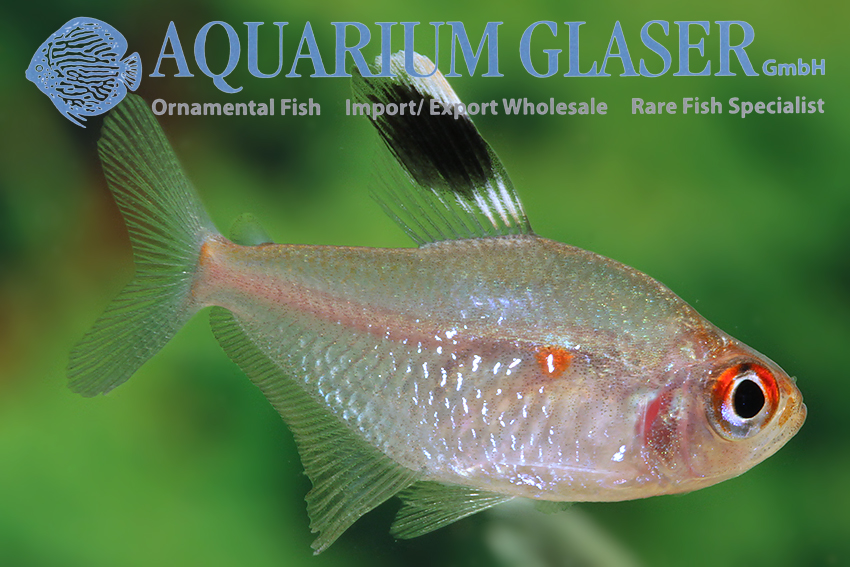
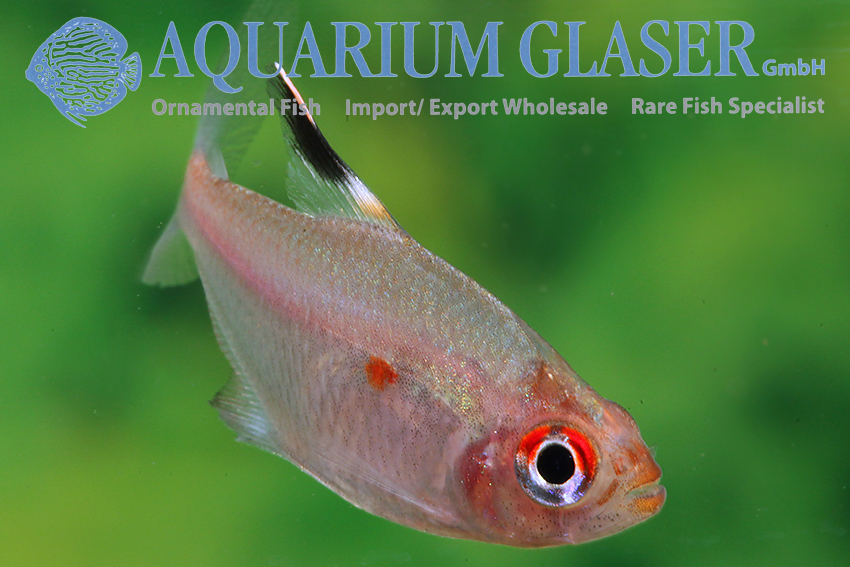
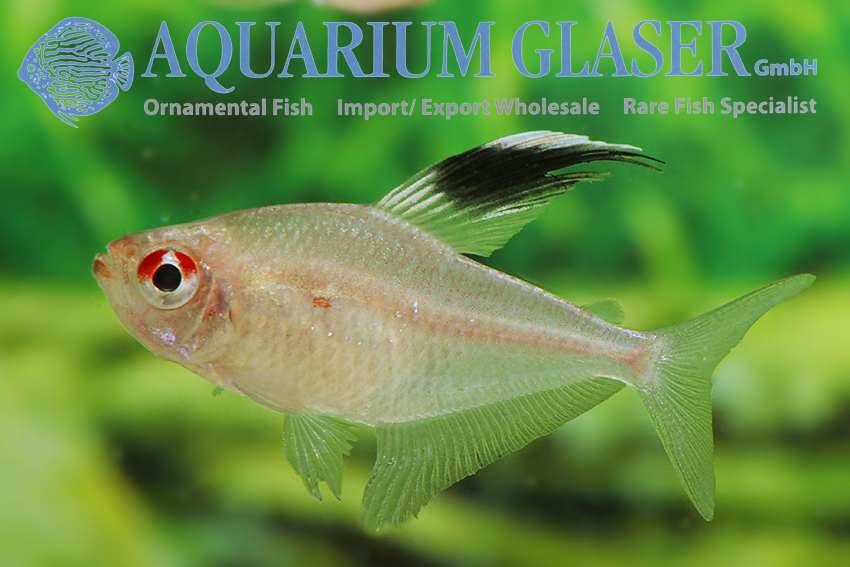
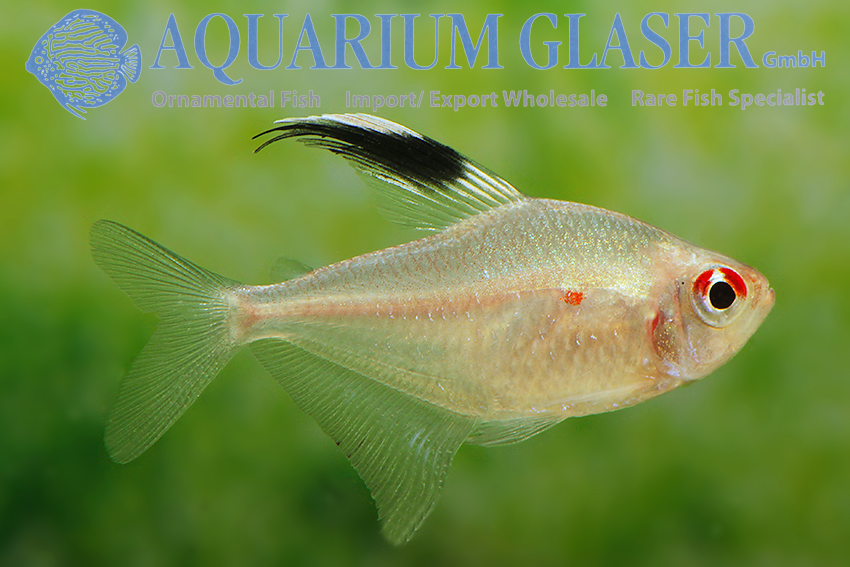
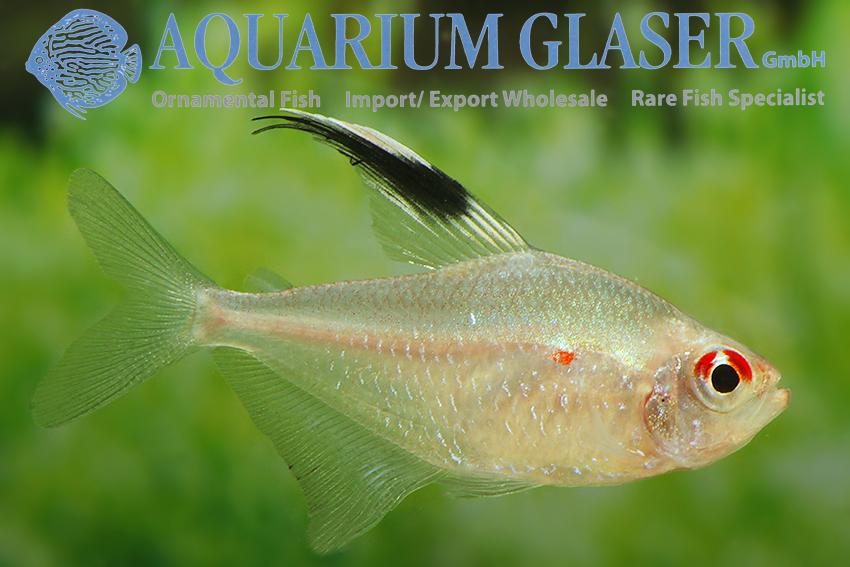
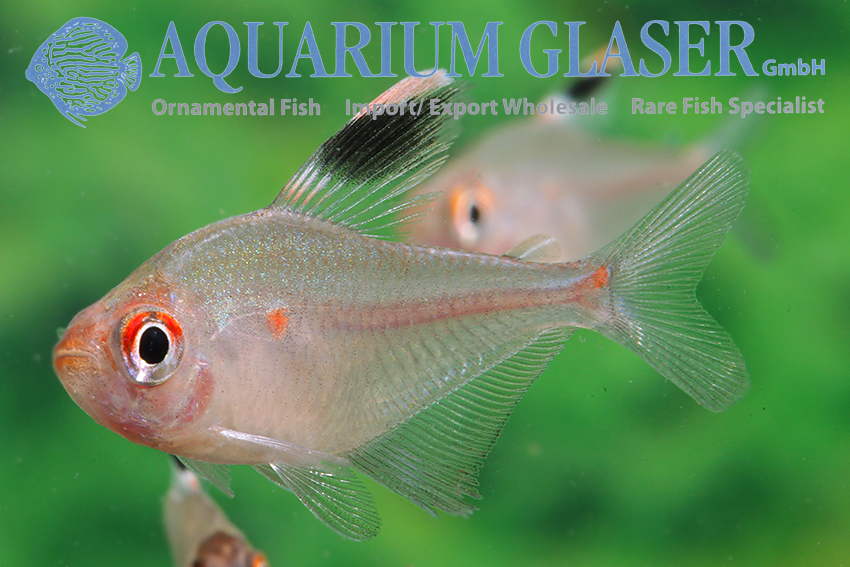
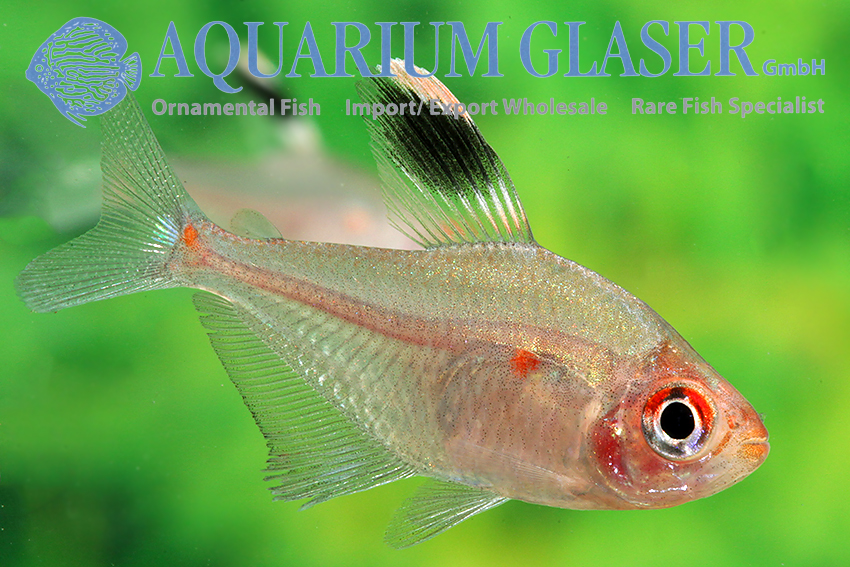
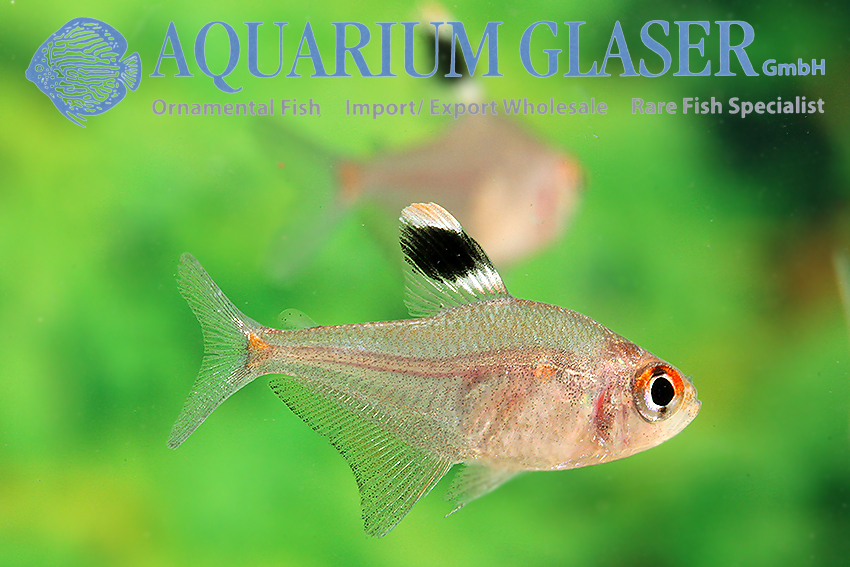
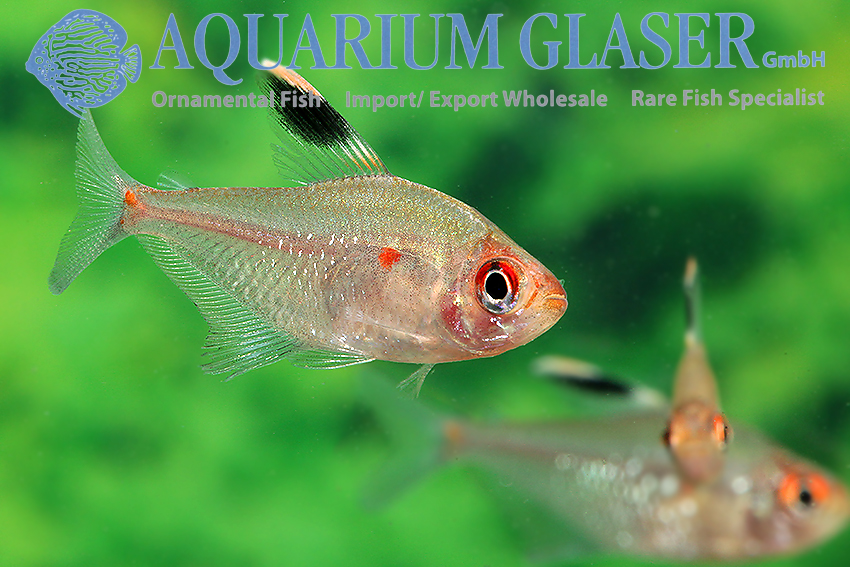
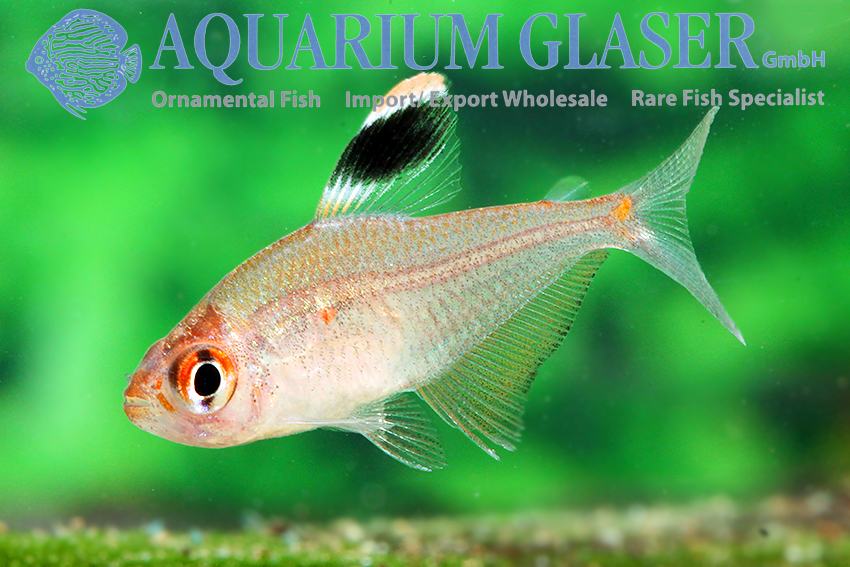
Unfortunately, the most reliable distinguishing feature of the three species, namely the anal fin coloration, is not yet recognizable in juveniles. In this respect, all three species look identical at this age. The species-typical red dorsal coloration of H. pyrrhonotus is also not yet pronounced in juveniles. The distinction between H. socolofi and H. pyrrhonotus is therefore particularly dependent on the reliability of the exporter, as these two species come from areas close to each other.
We have taken a close look at a recent import of juvenile H. pyrrhonotus and found that there are at least two features that make it possible to distinguish juvenile H. socolofi from H. pyrrhonotus: only H. pyrrhonotus has red lips (overall the head appears very red) and shows a silver-colored glitter pattern when light falls on it at an oblique angle. However, both features are also found (albeit less pronounced) in H. erythrostigma. However, as the latter comes from Peru, this is not a major problem.
For our customers: H. pyrrhonotus (md) has code 261653 on our stocklist. Please note that we only supply the wholesale trade.
Text & photos: Frank Schäfer




